Engine Oil Grades Chart + Engine Oil Viscosity Chart
One easy method to check the engine oil’s grades and visocsity is looking at charts, diagrams, and tables to get more information about your required engine oil
You can find this chart on our bottles, and its more detailed form can be found on our website
Oil is one of the most critical variables influencing engine performance and service life
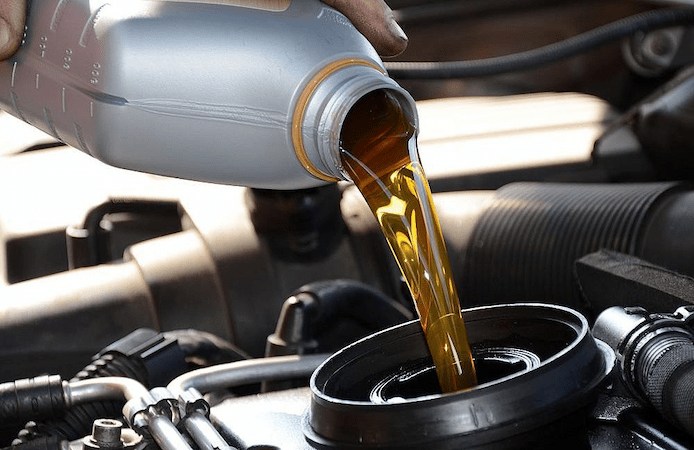
In a nutshell, the lubricant stops all those metal pieces from separating or fusing to the world’s best anchors
If you don’t use automobile engine oil, your engine will wear out in seconds
Engine oil is made up of two parts: base oil plus additives
The two collaborate to create the final product you pour into the engine
Consider coffee as an analogy: it’s a water-based oil that comes in the form of a packaged ingredient for coffee beans
The bulk of engine oils is made up of base oils
They are responsible for lubricating internal moving components, absorbing heat, and sealing piston rings
Engine oil base stocks can be made up of 1) petroleum, 2) synthetic chemicals, or 3) a mix of both
Crude oil is processed into petroleum or primary oils
The refining process cannot eliminate contaminants such as sulfur, nitrogen, oxygen, and metallic components such as nickel or vanadium in crude oil
The refining process separates various weight types of oil molecules with identical molecular weights but distinct compositions, lowering performance
On the other hand, synthetic base oils have been meticulously designed to contain only beneficial ingredients
As a result, synthetic base oils do not include impurities or compounds that would render them ineffective
Their pure and homogeneous adaptation and their molecular structure produce features that give significant friction, maximum oil film strength, and reduced performance at extremely high temperatures
The engine oil additive system’s numerous compounds have antiwear, antifoam, anticorrosion, antiacid, antistick, anticorrosion, and qualities
Zinc, phosphorus, and boron are examples of chemical additives
Balancing the appropriate engine additives with base oils may be a challenging balancing act for oil formulators, especially as cars get more demanding and sophisticated
Modern engine oil is a highly specialized commodity designed by engineers and chemists to perform various critical tasks
The automobile engine oil or Lubricants minimize friction and wear by reducing contact between components
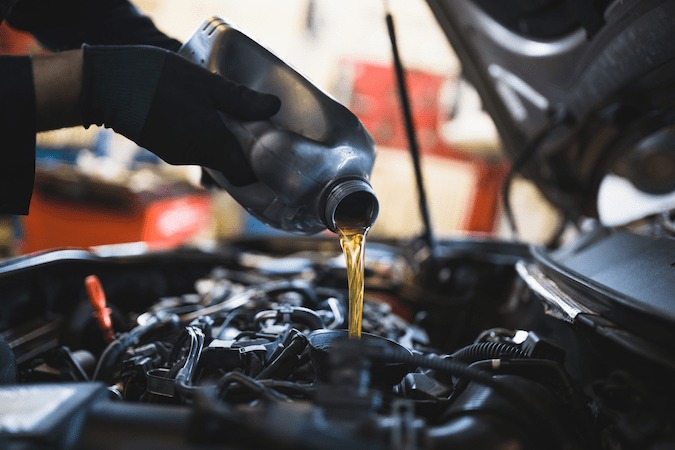
Lubricants maintain the inside of the vehicle clean by suspending pollutants in the fluid or preventing them from clinging to parts
To keep the interior clean, base oils have variable degrees of solubility
The capacity of a liquid to dissolve a solid, liquid, or gas is referred to as solubility
Detergents aid in the cleanliness and effective operation of critical components such as pistons
While oil solubility is significant, detergents and dispensers are also crucial
Cleaners are engine additives that prevent impurities from clinging to components, particularly hot ones, such as pistons or piston rings
Dispersants are engine additives that keep contaminants in the fluid suspended
The dispenser functions as a solvent, keeping the engine oil clean and preventing sludge formation
Engine oil lowers heat friction on moving parts, decreasing the device’s total working temperature
Lubricants absorb heat from the contact surface area and distribute it to a safe place, such as a fuel tank
Compared to the quantity necessary to guarantee appropriate cooling of these internal components, the amount of engine oil required for lubrication is relatively modest
For example, engine oil works as a dynamic seal at the piston/cylinder ring interface
Dynamic sealing keeps combustion gases in the combustion chamber, increasing horsepower and preventing hot gases from polluting the car’s engine oil in the tank
Shock absorbers and lubricants reduce mechanical shock
A strong lubricant coating prevents tearing and absorbs and distributes these energy tips over a large contact area
By decreasing mechanical shock to the part, wear and tear forces are reduced, and the part’s entire life is extended
Lubricants must be capable of preventing or reducing internal component corrosion

Lubricants do this by neutralizing corrosive materials chemically or by forming a barrier between components and corrosive substances
Engine oils do not naturally guard against rust and corrosion
These features should be introduced via engine additives
Since engine oil is compressed, it is a good medium for energy transmission, such as when utilized with hydraulic valve lift or when returning engine components with variable valve timing
Here we are going to talk about engine oil grades chart, viscosity chart, flow diagram, temperature chart, thickness chart, weight chart, and engine oil guide in general
If you are in the trading business of engine oils, at the end of this article, we will give you some hints to enable you to tell the difference between bad, sound, and excellent engine oil for your market and your car
Engine oil grades chart
When vehicles initially debuted, the first efforts to categorize motor oils were undertaken
Viscosity was regarded as one of the essential qualities of oil already at this early stage
As a result, in collaboration with engine manufacturers, the Society of Automotive Engineers (SAE) created a viscosity-based categorization system for motor oils
Oils are allocated numbers depending on their viscosities at various temperatures
It has recently been realized that oil viscosity at cooler temperatures, as well as at high temperatures, is critical to an engine’s long-term performance
As a result, the SAE has created two different viscosity measures, one for cooler and hot conditions
The most typical high-temperature ranges are 40°C and 100°C
Temperatures are as low as -30°C have been documented with the introduction of a test performed at cold temperatures, utilizing a spinning viscometer known as a cold-cranking simulator
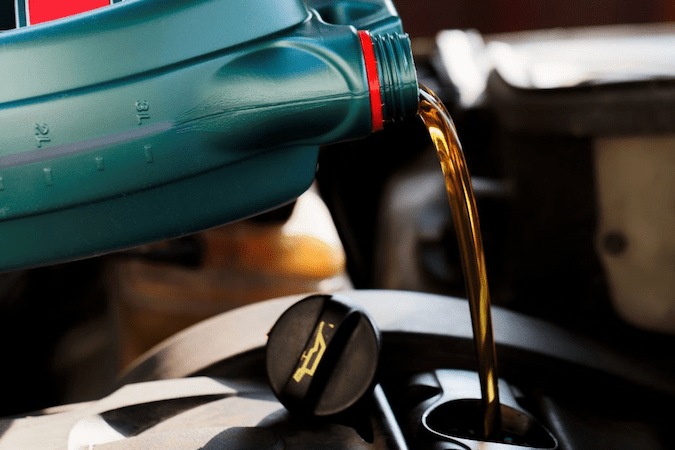
The findings are provided in two distinct units since the viscosities are evaluated in two separate temperature ranges
The centipoise is the initial unit used to report an oil’s absolute viscosity at cooler temperatures
This value represents how easily the oil can be transferred
The Centistoke is another measure used to describe the kinematic viscosity of engine oil at high temperatures
The number represents the time needed for a set quantity of fluid to flow through a specifically sized orifice on the testing instrument
When designating the SAE viscosity grade, oils appropriate for usage in cooler temperatures are represented by the letter W
These oil grades must fulfill maximum viscosities at defined temperatures and maximum requirements for marginal operating temperatures, as given in the table below
Oils appropriate for usage at higher temperatures have viscoelastic properties that fall within limits listed in the table below
Engine oil viscosity chart
The most significant property of engine oil is its viscosity
The lesser the viscosity in the chart, the more quickly the oil flows like water
Concentrated oils, like honey, move at a slower pace
The essential property of oil is its viscosity, which relates to its flow resistance
Oil viscosity fluctuates with temperature, becoming thinner when heated and thicker when chilled
Whereas motor oil must flow at low temperatures at starting to lubricate the engine, it must also be thick enough to protect the engine during high running temperatures
Viscosity variations should be maintained to a minimum when oil is utilized at various temperatures, as is the case with most engines
Isn’t it beneficial to have a number that represents the change in oil viscosity? This is referred to as the Viscosity Index (VI)

It is calculated by comparing an oil’s viscosity at 40 °C (104 °F) to its viscosity at 100 °C (212 °F)
The greater the VI, the lower the viscosity with temperature; thus, the safer the engine oil will preserve the engine
The VIs of fully synthetic oils are often greater than those of traditional oils
Motor oils are typically formulated
They are made up of mineral base oils, semi-synthetic or completely synthetic base oils, and various amounts of additives
The quality of engine oil is determined by the base, its qualities, and the additives
Temperature viscosity characteristics, protecting against excessive wear, keeping the engine clean, retaining suspended particles such as soot or abrasive, yield strength beneath pressure, and so on are the major criteria for engine oils
The flow properties of engine oil are affected by temperature
Engine oils are offered in various SAE grades to suit the environment and purpose of the user
At high and low temperatures, lubricants respond differently
In truth, the viscosity, resistance to flow, and thickness of the oil layer are all characteristics of the oil
The following shows how viscosity varies with temperature: the greater the temperature, the more liquid and less viscous the oil gets
Your oil must maintain a specified viscosity throughout all seasons to guarantee maximum vehicle performance
It should remain a viscous liquid at both low (to allow for cold starts) and high temperatures for protection and sealing
Your service handbook describes the grades that have been tailored for each of your lubricants
The SAE Society of Automotive Engineers has created a tool for determining the viscosity level of lubricants in hot and cold areas
The viscosity is represented by two digits separated by the letter W “Winter” for cold grades
When cooled, the lower the viscosity, the more fluid the oil is at low temperatures, and the simpler it is to pump

High fluidity at low temperatures facilitates cold starting
The degree is indicated by the number to the right of the letter W
To determine the oil and viscosity for your car, see the manufacturer’s maintenance handbook
Engine oil flow diagram
What direction does the oil move in, and what precisely does it perform within your engine diagram flow? First, the oil you put into the top of the engine travels through several channels before arriving in the bottom oil pan, also known as the sump, which houses the drain stop
The oil returns to the bottom by multiple possible channels, but only one path works under pressure
This figure depicts a tube with a loose-weave metal screen at the pan’s bottom
The screen is connected to a pickup tube that runs straight to the oil pump
The tube and screen are immersed in oil approximately four inches deep
The screen keeps big debris particles, typically larger than a tiny fragment of an inch, out of the oil pump
Many people are unaware that most oil pumps are just a collection of special gears that take in low-pressure oil and compress it to high-pressure oil, which then travels through a chamber with a spring-loaded valve
The valve restricts oil flow to a specific pressure range, commonly between 1 and 60 lbs/in2
Because excessive oil pressure might harm bearings, any pressure more than this will be vented down to the bottom
It travels from the pump to the exterior of the oil filter, where it is driven through the filter media to the center, where it discharges into the engine’s oil venues
A bypass valve prevents the pressure from falling too low if the oil filter gets blocked
The first and most crucial function of motor oil is to lubricate the spinning modules of an engine, and it must do so under high pressure

Oil is driven into the gap between the bearings that make contact with the crankshaft journals
The bearings are just metal sleeves that round the engine’s spinning components
The crankshaft has main bearings, and the crank throws have connecting rod bearings
A thin coating of oil is held between both the directions and the working components on the crankshaft by this narrow gap, which usually is a tiny percentage of an inch on contemporary engines
The oil preserves and extends the life of machined components while under pressure and at the proper operating temperature
Metal should never come into contact with other metal particles while in motion
It’s worth noting that much of the lubricant is driven out of the bearings’ sides and flows back into the bottom
If the clearance is too large, say 0
005 of an inch or less, pressure decreases in the engine’s upper end
A flashing oil light or a light tapping sound in the rocker arm region on the topside of the engine indicates that not enough oil underneath compression is approaching the engine’s upper end
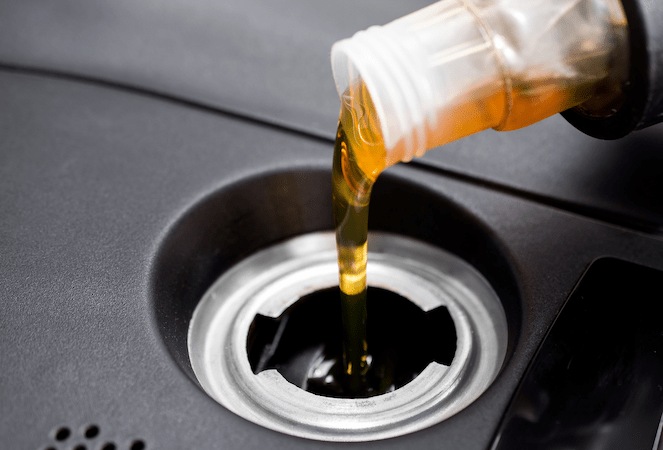
For the sake of argument, I’d like to see an automobile motor with roller or syringe bearings replace the significantly less expensive and appropriately long-lasting sleeve bearings
I realize such an engine would be costly to develop, but it would endure forever
Syringes bearings are used in many bigger engines
They typically spin at a lower rpm (velocity) than gasoline automobile engines
The limiting element is not RPM
I’ve been flying model aircraft for thirty years, and many of my elevated engines feature roller bearings for reduced friction and greater rpm
A needle bearing equipped vehicle engine would provide more power and last longer, but at what cost? Most of the oil is used to lubricate the cylinder, while the remaining is used to lubricate the valve and rocker arms
If your vehicle uses pushrods instead of an overhead camshaft, oil is pumped under force into the valve’s lifters

These lifters effectively lubricate the rocker arm region by pumping oil up via the hollow push rods
If your vehicle has an overhead cam, oil is transferred to the cam and spills into the connection points between both the cam and the valve stems
After lubricating the camshaft and its associated components, the oil flows down passages in the cylinder and motor block to the bottom by gravity, ready to go on another adventure
A tiny hole in many cylinder head designs pours oil onto the cylinder to lubricate the valve contact region of that cylinder
Unique circles on the piston ring set’s bottom wash away excess oil and restore it to the sump
Engine oil temperature chart
The appropriate oil operating temperature is maybe even more vital to the engine than the water or coolant degrees chart, so let’s look at how to manage them
Mainly because it seems to be the most misconstrued aspect of the method, and oil cooler installation is essentially a reaction when an engine of any type overheats
In many cases, even on basic manufacturing commercial cars
Fitting an oil cooler to every tuned Mini has been the must thing to do virtually since the birth of the classic Cooper S, for no apparent reason
The original fitting was required because oil and bearings technology was not, particularly sophisticated was necessary
Asking an old oil to lubricate a racing engine and a gearbox pushed their effectiveness to the limit of their all-too-limited capacity; therefore, rigorous supervision over their work environment was essential for reliability
As a consequence, an oil cooler was added
Since then, enormous technical developments have substantially enhanced contemporary motor oils
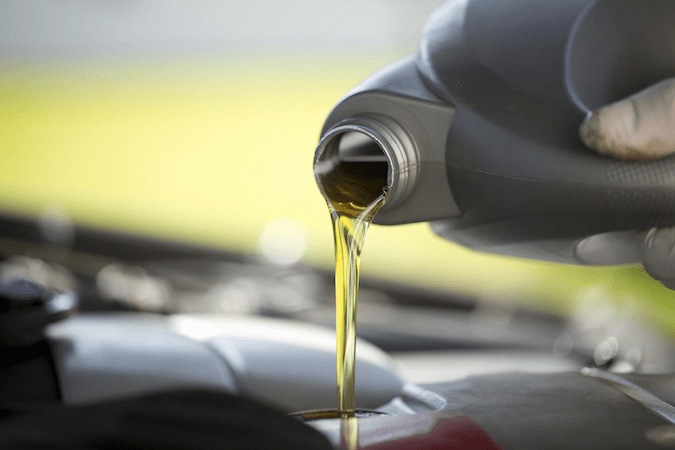
They are substantially more durable than their progenitors, readily managing broad temperature variations without full degeneration
Temperature is crucial for dispersing contaminants and other impurities such as water and ensuring appropriate lubrication
Running the oil at too low a temperature is significantly worse rather than running it at too high a temperature
Short journeys result in moderate temperatures; however, lengthy periods of active driving result in extremely high temperatures
Operating the temperatures outside of the recommended temperature range needs oil changes substantially more frequently and many miles sooner than normal
Usually by two-thirds – and I’m not exaggerating
In addition, the milky gunk that develops in rocker covers and breather pipes is produced by the situation of the short journey – it’s moisture that has emulsified the oil because the engine oil is not getting hot enough to burn it off
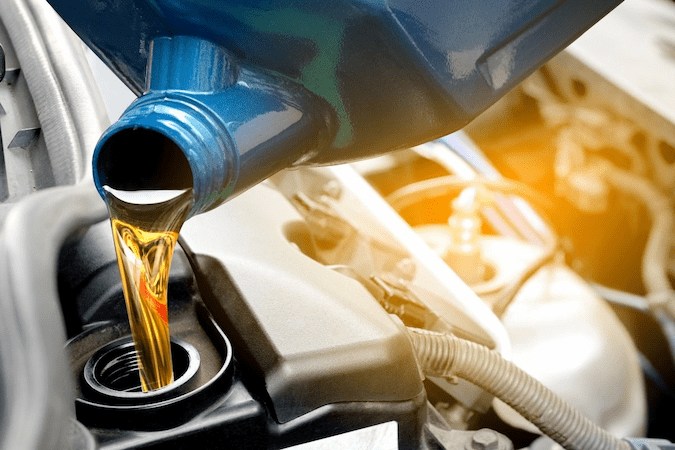
Temperatures between 100 and 107 degrees Celsius give the highest performance in terms of both efficiency and performance
Using a decent oil may get up to 120 degrees Centigrade without being too hot
Some engine designers consider that oil should be kept at around 80 degrees Celsius to keep things safe
This is simply insufficient for best performance
The most challenging difficulty in establishing the operating temperature of a Mini
You must assess the average oil temperature measured in the gearbox sump temperature
Extremely tricky to perform as there is no ‘natural’ spot for placing the sensor
Consequently, many people add an adapter in the transfer line connecting the block to the filter head or oil chiller
Unfortunately, this leads to a much lower and consequently erroneous reading, rendering the fitting meaningless and squandering money
Mini Spares, as usual, come to the rescue
After considerable fighting, one of their suppliers in the appropriate region consented to create a pair of adaptors that fit into the sump-plug hole, totally replacing the drain plug

Therefore, these adaptors permit the use of many different capillary-type temperature gauges
After all, the electric ones that are readily available are nothing more than meters and so are pretty useless
If you truly want to know the temperature, you want an exact measurement rather than a close call
What does this have to do with engine temperature or cooling? The oil not only lubricates engine components but also cools them by transporting heat away from them like water coolant does in the cooling system
Much of the oil cooling is performed by airflow through the alloy gearbox casing, and some are accomplished by the cooling system transferring heat away from the crankcase/engine block
Really great oil will achieve this more effectively than others, decreasing general operating temperatures without needing additional cooling capacity, making the cooling system’s task easier
It loses thermal efficiency as it deteriorates
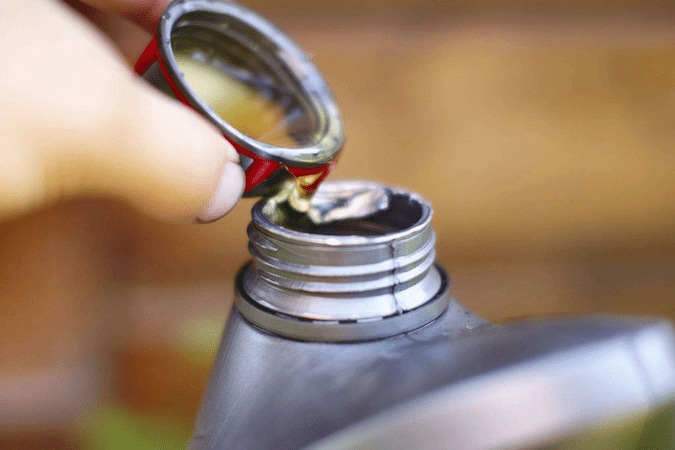
Engine oil guide
“Would you advise a 5W-40 or 15W-40 diesel lubricant for a country with tropical weather? A guide for using engine oil could answer such questions
Would 5W-40 diesel engine oil be less viscous than 15W-40 diesel lubricating oils for cold starts in the early hours? What influence would this have on engine performance and protection? This will be utilized on a fleet in a tropical climate with daily temperatures ranging from 32 to 37 degrees Celsius and substantial humidity 60 percent
Temperatures will vary from 24-27 degrees Celsius in the early morning and late at night
Should I dismiss the ‘W’ value and focus on the 40 as there is no winter?”

Use the viscosity grade(s) specified by the original equipment manufacturer (OEM) throughout the engine’s life, especially throughout the engine’s warranty period, when choosing the suitable lubricant for your automobiles
The practical viscosity classes are primarily decided by the projected ambient temperatures, particularly the starting temperatures
Even with changing temperature swings, the working temperature of lubricating oils does not change much; hence the advised viscosity is fairly stable for varied applications
The essential difference is the viscosity grade “W,” which is connected to the starting temperature and influences the lubricant thickness and availability to lubricate the engine
A lubricant with a viscosity of 5W must flow properly at reduced temperatures than a lubricant with a thickness of 15W, so it is predicted to be employed at lower starting temperatures
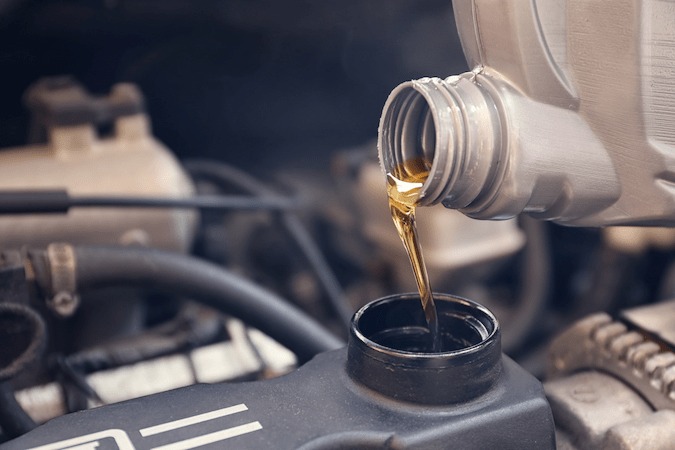
Most OEMs still advocate multi-grade oils in tropical circumstances, such as SAE 15W-40, as the lubricant flows quicker through the engine than a pure SAE 40, even at high-temperature conditions
Another vital element to consider when purchasing engine oil is the standard certificate or level of performance
The American Petroleum Institute decides this in the United States (API)
For diesel engines, the quality levels are marked by the letter “C” and a second letter given in alphabetical order, starting with “A” for the least recent and maximum performance and advancing to “J” for the most current and greatest performance
Furthermore, specified OEM performance criteria for different applications are a condition of the engine’s guarantee
In contrast, a 5W viscosity grade may be utilized when a 10W or 15W is indicated to deliver quicker lubrication to vehicle components throughout start-up
There are, nevertheless, some downsides to consider
For example, because the 5W recipe has a lighter base stock, the lubricant may evaporate quicker than a 10W or 15W mixture

The 5W may also be more costly than the 15W as it breaks down more of the viscosity improver chemicals in the mix
You could also use synthetic oil with comparable viscosity and quality assurances
In general, synthetic oils outperform conventional mineral oils regarding detergency and motor longevity
If you do not have access to the specific quality and viscosity recommended by the OEM, 15W flows smoothly in tropical countries at moderate temperatures
Engine oil thickness chart
Flow resistance or consistency affects engine oil viscosity
In the chart, the thickness definition is represented by two numbers
The first digit indicates winter before the “W
” This option controls how oil flows when the engine is turned off or cold, as opposed to when the engine is turned on
The second number represents how the oil flows while the engine runs typically
The lower the number, the better the flow
5W-30 flows better than 10W-30 at starting, while 10W-30 flows quicker than 10W-40 at average engine temperature
The consistency of engine oil is expected
Engine oil naturally thickens and thins as it cools and warms
Thin, low-viscosity lubricants protect engine components better at low temperatures
High viscosity greases often provide benefits in terms of oil film strength and engine protection at high temperatures
Internal combustion engines will continue to play an essential role in deciding how much road traffic emissions will be decreased in the following decades
Furthermore, the proliferation of high-efficiency gasoline and diesel engines remains the most effective strategy to cut fuel consumption and greenhouse gas emissions
Daimler, who had long recognized this reality, formed Mercedes-Benz a few years earlier
In particular, as part of a multifaceted development plan, the business intends to improve cars powered by sophisticated internal combustion engines, create new hybrid drives with varying power levels, and create all-electric vehicles powered by battery or fuel cell technology
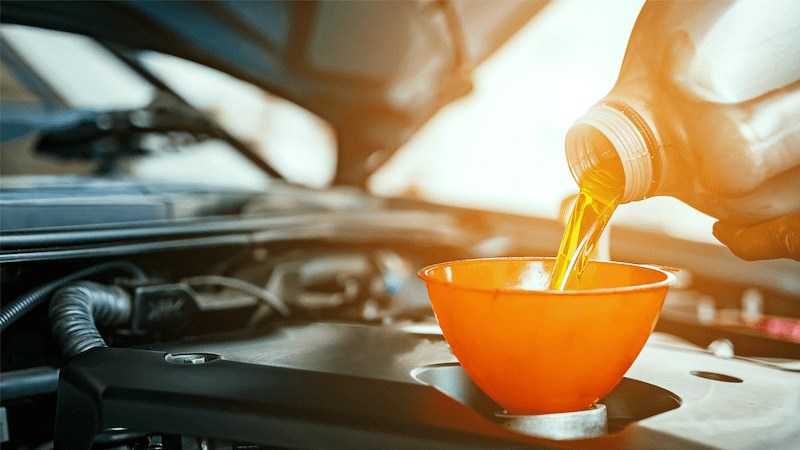
To minimize carbon emissions, conventional internal combustion engine cars may be improved further by minimizing internal friction in mechanical components
Daimler AG is a strong leader in long-term, unsurpassed mobility
Engine oil weight chart
Some people use weight as an index for calculating the engine oil viscosity chart
Lubrication is required for automotive components to optimize performance and avoid friction and corrosion
In many vehicles, this lubricant is created from oil
The irony is that without oil, your automobile will not start and will be severely damaged
After a time, change the oil to ensure that it preserves its qualities
Consequently, record the number of kilometers traveled for oil changes and replace it after a set distance usually 5000 kilometers or every three months
Motor oils are classified into three types: mineral oils, synthetic oils, and semi-synthetic oils
Each of these motor oils is unique in its composition
These materials might be made from refined crude oil or laboratory-made polymers
Cars need more than ethylene glycol and propylene glycol-based antifreeze
One such example is motor oil, which we will go over in further detail in the manufacturing technique section below
Simply described, around 90% paraffinic (heavy) hydrocarbons are distilled from crude oil, with the remainder being “additives
” The desired qualities of the oil determine the length of the hydrocarbon chain
However, the underlying reserves are often made up of linear and branched compounds ranging from C16 to C50
As previously stated, it comprises around 95% petroleum, synthetic chemicals, or a combination of both, with the remaining 5% made up of additives
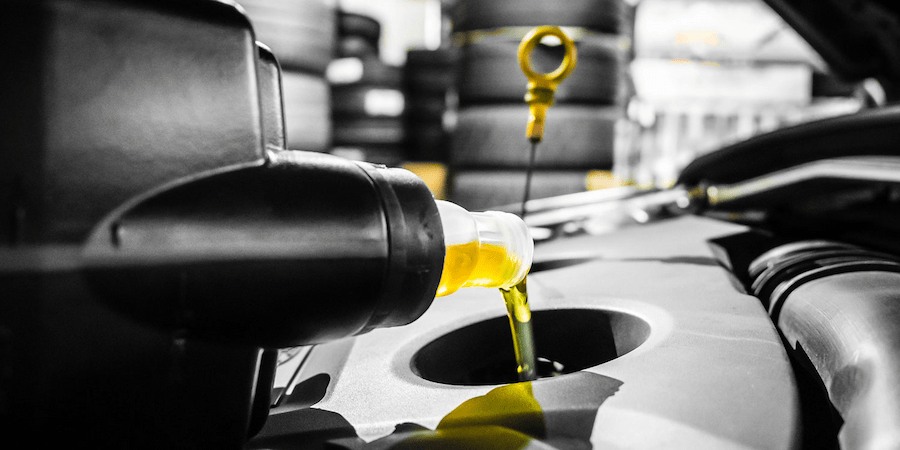
These additives are in charge of precisely controlling oil viscosity and lubrication, as well as preserving engine components from wear
Some additives are used to prevent engine corrosion, while magnesium sulfonate aids in the removal of impurities and residues from the oil
Polymers with a high molecular weight viscosity index improvers like poly(methyl methacrylate) and ethylene-propylene copolymers are added to low viscosity base oils to create multi-purpose lubricants that can be thickened or thinned as required
Polymer molecules, such as rubber, are in the casing coils at low temperatures to avoid oil condensation
They stretch into random linear coils at higher temperatures to protect the oil from being too thin
As a result, these oils are labeled with the numbers: 5W-30 for colder regions (below 0°F) and 10W-30 for warmer areas (below 0°F)
For warmer climates, use 20W-50 up to 32 degrees Fahrenheit
In this article, we talked about many important factors affecting the quality of your engine oil
As mentioned before, engine oil is the most essential liquid in your car, and choosing the best quality one considering your budget could be difficult
As a wholesale business person, you can contact our expert team to advise you about some of the best quality engine oils today for you and your market